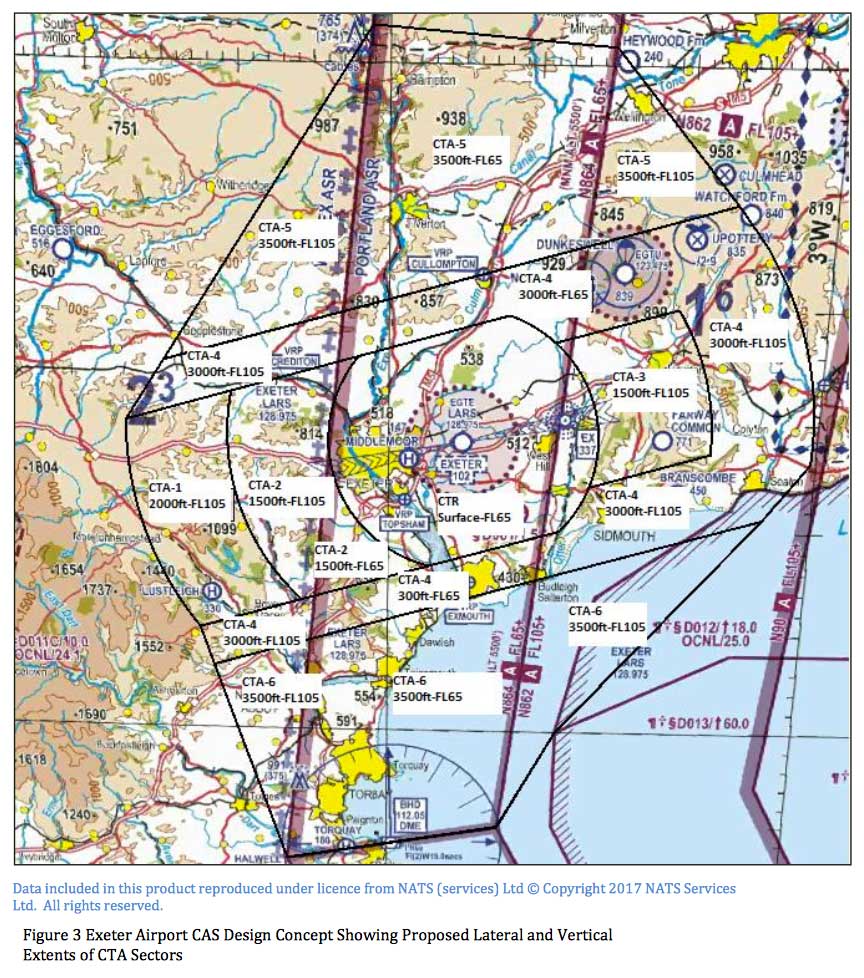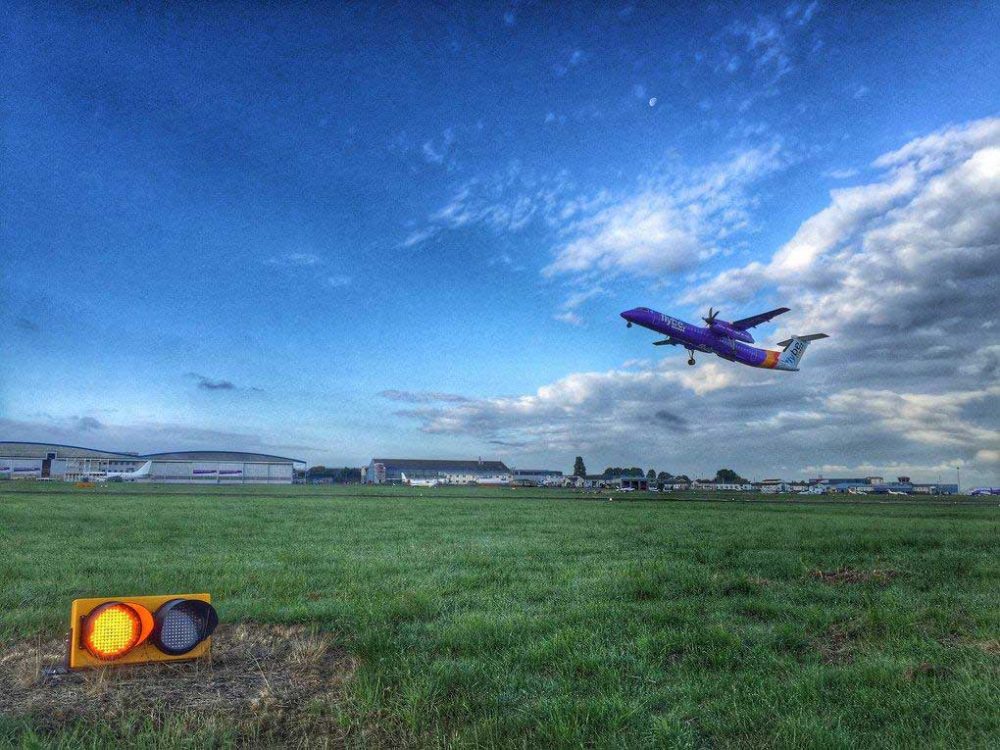Exeter Airport wants to replace its current Class G airspace with Class D Controlled Airspace (CAS). If granted, aircraft flying in the airspace would have to comply with Air Traffic Control instructions and ask for clearances.
The airport has launched an Airspace Change Proposal Consultation with responses required by Thursday 9 June 2017.
The Airport says that the current Class G airspace has led to reportable safety events, with unknown airspace users interacting with arriving and departing air traffic.
“While current operations are safe, there have been occasions where the prevalence of unknown aircraft operating near Exeter could have potentially led to a degradation of safety margins,” said a statement from the Airport.
“Consequently, this proposal aims to address this issue with the establishment of Controlled Airspace (CAS) surrounding Exeter to safeguard Instrument Flight Rules (IFR) traffic operations at the Airport and to ensure deconfliction between the air traffic operating near the Airport.
“Exeter wishes to engage with all aviation stakeholders that might be affected by this ACP. Constructive feedback will inform the development of the ACP, ensuring that any positive impact is enhanced and negative impact is minimised.”

The Class D airspace proposal from Exeter Airport. Dunkeswell Aerodrome is outside the Class D but under the CTA.
The proposal states that Dunkeswell Aerodrome, 11nm northeast of Exeter Airport, would remain clear of the Class D. However, a CTA will overlay the aerodrome ATZ. A Letter of Agreement (LoA) between the Aerodrome and Exeter ATC will spell out how GA Dunkeswell air traffic can operate in the area and CAS access.
North Hill Airfield, a glider site approximately 10nm northeast of Exeter Airport used by Devon and Somerset Gliding Club, will be in a similar situation.
Exeter Class D proposal













